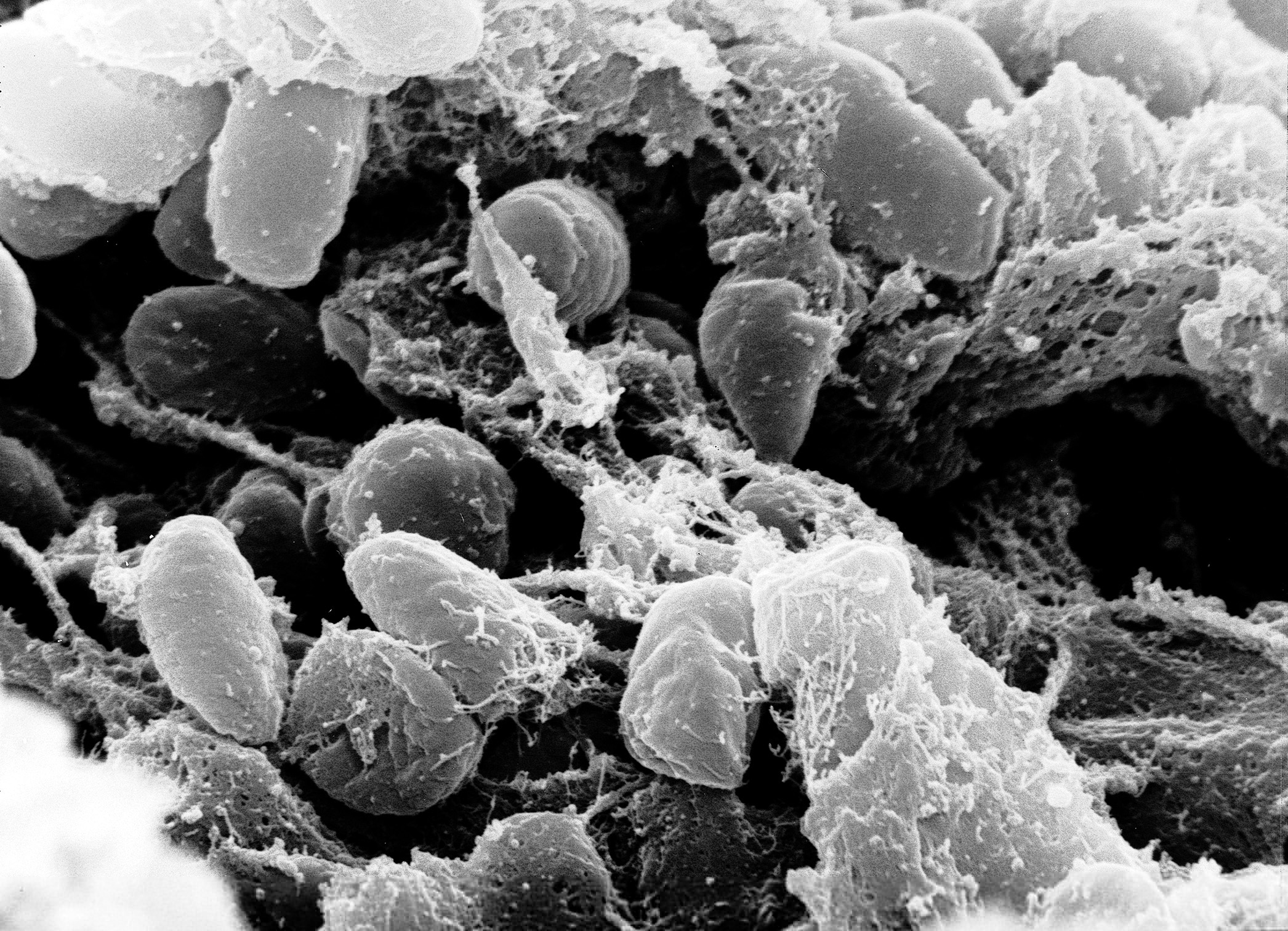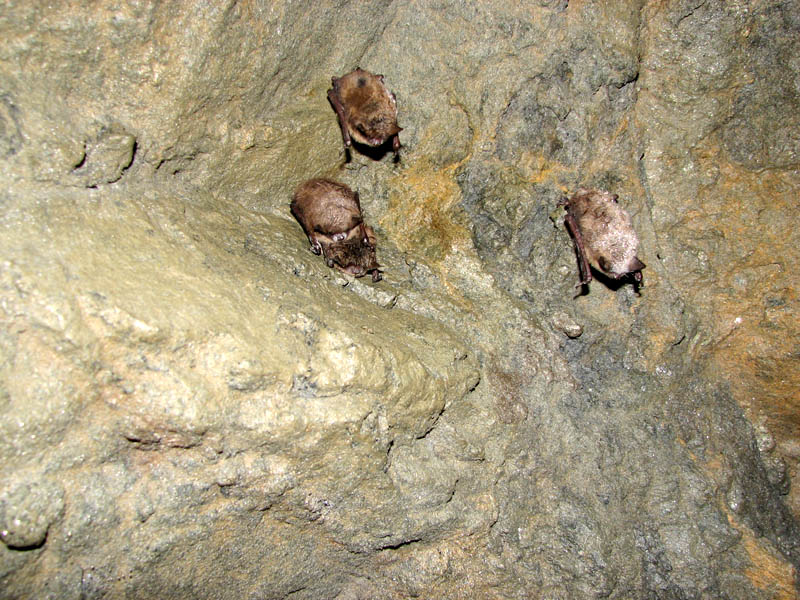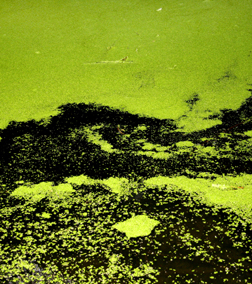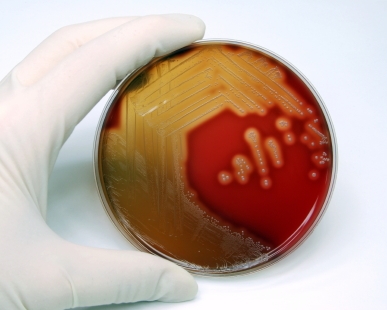“The Andromeda Strain”, a novel written by Michael Crichton, remains one of my favorite science fiction novels for two reasons (spoiler alert for the plot): The US government deliberately sent objects into space to scoop up extraterrestrial microorganisms and examine their potential to be used as a weapon (with the expected consequences of contaminated space probes falling near human habitats and causing trouble), and the deadly organism infecting humans is stopped in its tracks by the inescapable bounds of its pH requirements exemplified by two survivors in an afflicted town: a crying baby and a Sterno-drinking man. Reality may be a bit different from the novel but the principle is the same: We are launching probes from our planet and sending them to other planetary bodies, sometimes to stay on another planet, sometimes to return to Earth. In both cases, worries about terrestrial organisms contaminating other planets and extraterrestrial organisms contaminating Earth are valid. Because we are sending more and more probes to examine the possibility of life on other planetary bodies, Curiosity being the most recent example, the question remains: How do you adequately test for organisms that may be hitching a ride from Earth into space? Continue reading “Finding Life on Mars May Be Complicated by Microbes Hitching a Ride from Earth”
Microorganisms: Infectious Disease and Ecology
Blog entries about bacteria, viruses, fungi and other microorganisms.
Exploiting Bacterial Toxins for Good (Making Lemonade from Lemons?)
 Bacterial exotoxins are scary things. The names of the big three: Tetanus, Anthrax and Botulinum, are sufficient to evoke fear and conjure up images of agony, paralysis, mass hysteria, and permanently frozen Hollywood faces. The worst toxin stories are hard to forget. I can still remember the gruesome textbook case studies that accompanied my bacteriology college lectures. There were the home-canning-gone-horribly-awry botulism stories, the historical examples of agonizing tetanus poisonings, and the less lethal but still nasty cases of fast-acting staph toxins delivered to unsuspecting airline passengers in re-heated meals (avoid the ham sandwiches!). It’s all coming flooding back to me.
Bacterial exotoxins are scary things. The names of the big three: Tetanus, Anthrax and Botulinum, are sufficient to evoke fear and conjure up images of agony, paralysis, mass hysteria, and permanently frozen Hollywood faces. The worst toxin stories are hard to forget. I can still remember the gruesome textbook case studies that accompanied my bacteriology college lectures. There were the home-canning-gone-horribly-awry botulism stories, the historical examples of agonizing tetanus poisonings, and the less lethal but still nasty cases of fast-acting staph toxins delivered to unsuspecting airline passengers in re-heated meals (avoid the ham sandwiches!). It’s all coming flooding back to me.
So, a healthy respect for bacterial toxins is not a bad thing. The worst ones are highly potent and lethal, others may be less potent but are still capable of delivering effects from temporary misery to long-lasting debilitation. But it’s not all bad news. As any microbiology student knows, studies of bacterial toxins have led to some of the most significant advances in the history of medicine–the most well-known example being the development of vaccines based on denatured, inactive forms of toxins. Tetanus and diphtheria are the classic examples where knowledge of the properties of the toxin itself proved to be the key to developing treatment strategies. Continue reading “Exploiting Bacterial Toxins for Good (Making Lemonade from Lemons?)”
Sequencing the Black Death is a Window to the Past
After writing my review of the Proceedings of the National Academy of Sciences USA article “Targeted enrichment of ancient pathogens yielding the pPCP1 plasmid of Yersinia pestis from victims of the Black Death”, I vaguely wondered if the authors could have sequenced more than a single 10kb plasmid. If the single-copy chromosomal DNA was too scarce, maybe one of the other Yersina pestis plasmids that may exist at a higher copy number (e.g., pMT1) might be sequenced. Continue reading “Sequencing the Black Death is a Window to the Past”
Dance Macabre: Will 14th Century Remains Reveal the Pandemic Secrets of the Black Death?
 Last year, I reviewed a PLoS Pathogens paper that found European Black Plague victims from the mid 14th century were infected with more than one clone of Yersinia pestis. While the Y. pestis-specific sequences amplified from several skeletal samples from various countries were evidence of the bacterium as the etiological agent, questions still remained about the virulence of the outbreak. What allowed that ancient strain of Y. pestis to cause such widespread death? Another group of researchers decided to further analyze the causative agent of the Black Plague by enriching for and sequencing one of the extrachromasomal plasmids present in the bacterial genome: the 9.6kb virulence-associated pPCP1 plasmid. Continue reading “Dance Macabre: Will 14th Century Remains Reveal the Pandemic Secrets of the Black Death?”
Last year, I reviewed a PLoS Pathogens paper that found European Black Plague victims from the mid 14th century were infected with more than one clone of Yersinia pestis. While the Y. pestis-specific sequences amplified from several skeletal samples from various countries were evidence of the bacterium as the etiological agent, questions still remained about the virulence of the outbreak. What allowed that ancient strain of Y. pestis to cause such widespread death? Another group of researchers decided to further analyze the causative agent of the Black Plague by enriching for and sequencing one of the extrachromasomal plasmids present in the bacterial genome: the 9.6kb virulence-associated pPCP1 plasmid. Continue reading “Dance Macabre: Will 14th Century Remains Reveal the Pandemic Secrets of the Black Death?”
Where Mycologists Go To Church On Sundays
 When it comes to academic triumphs and laudatory honors it can be said that mycologist Paul Stamets has his fair share. Stamets has authored six books on mushrooms, holds over twenty patents, is a winner of the Collective Heritage Institute’s Bioneers Award. Today he also runs a facility that boasts twenty four laminar flow benches across four laboratories processing between 10-20 thousand kilos of mycelia each week. He has close to a thousand mycelium cultures growing at any given time and is renowned across the world for his view of fungi as the ‘grand molecular dissemblers of nature’. And so it was that the Biopharmaceutical Technology Center was pleased to host a lecture by Stamets almost two years ago with the promissory title: How Mushrooms Can Save the World. Continue reading “Where Mycologists Go To Church On Sundays”
When it comes to academic triumphs and laudatory honors it can be said that mycologist Paul Stamets has his fair share. Stamets has authored six books on mushrooms, holds over twenty patents, is a winner of the Collective Heritage Institute’s Bioneers Award. Today he also runs a facility that boasts twenty four laminar flow benches across four laboratories processing between 10-20 thousand kilos of mycelia each week. He has close to a thousand mycelium cultures growing at any given time and is renowned across the world for his view of fungi as the ‘grand molecular dissemblers of nature’. And so it was that the Biopharmaceutical Technology Center was pleased to host a lecture by Stamets almost two years ago with the promissory title: How Mushrooms Can Save the World. Continue reading “Where Mycologists Go To Church On Sundays”
Worms from Heaven and Hell

Worms from the heights of space and the depths of the earth were in the news last week, one well-known species soaring to the heavens as part of a space flight experiment and a previously undiscovered species revealing the surprising extent of multicellular life in the hidden depths of earth.
The Worm from the Heavens
Caenorhabditis elegans perhaps qualifies as the most well-known of all worms. This 1mm roundworm, is a staple model organism in molecular biology. It’s easy to grow and store, possesses a simple neuronal network, and is transparent, making it easy to study cell differentiation and development. It was the first multicellular organism to have its genome sequenced, and the developmental fate of all its somatic cells has been studied. In some ways we know C. elegans better than we know ourselves.
PCR-Based Diagnosis Wins by a Mile In the White-Nose Syndrome Race

Since the first photograph of bats with white muzzles in Albany, NY, was published, hibernating bat populations in the northeastern U.S. have been devastated by an emerging disease, White-Nose Syndrome (WNS), which continues to spread throughout the United States and now has been found in two Canadian provinces. Bats suffering from WNS are emaciated with little or no body fat and have a characteristic white fungal growth on their wing membranes, ears and muzzles. Instead of hibernating all winter, these bats can be seen active in the snow, when there is virtually no food available.
The infectious agent that responsible for WNS is a new species of the cold-loving fungus, Pseudogymnoascus destructans (formerly, Geomyces destructans) . Currently, WNS is confirmed either through histological analysis or by fungal culture. Both of these techniques have significant limitations. First, they have turnaround times of at least one week. Secondly, they require large amounts of tissue sample from affected bats, more than can be reasonably taken from live bats. Histological analysis is a laborious process that requires highly skilled and trained personnel. Fungal culture can be difficult because bats harbor many bacteria and fungi, and getting a pure culture of a causative organism is not simple. Furthermore, researchers need a quick method for assessing spread of the disease that can provide results quickly.
Polymerase Chain Reaction (PCR), already used for a host of diagnostic tests in humans, plants and animals, is a logical choice. In a paper published in the Journal of Veterinary Diagnostic Investigation, Lorch and colleagues design and evaluate a PCR-based diagnostic method for WNS. They compare the PCR method to a fungal culture method and the “gold standard” traditional histological analysis. Continue reading “PCR-Based Diagnosis Wins by a Mile In the White-Nose Syndrome Race”
Microbiome Studies: We Are More than the Sum of our Parts

What if you could help protect yourself from certain diseases by populating your gut with “good” bacteria, or selectively getting rid of “bad” ones? Two news articles suggesting this possibility caught my eye this week. The articles both summarized results from the microbiome project—a research effort geared towards developing a deep understanding of how the bacteria that live in and on our bodies influence our health. Analyses of these bacterial populations are providing new insights that suggest we are much more than the sum of our parts, and that our health may depend not only on our own genes and lifestyle but also on the contributions of the bacteria that colonize us.
Continue reading “Microbiome Studies: We Are More than the Sum of our Parts”Virophages: The Enemy of My Enemy is My Friend

Viruses are small DNA- or RNA-based infectious agents that can replicate only inside living cells of a host organism. Most people know what a virus is, and many of us harbor at least one or two of them at some point during the cold and flu season. However, I would guess that many of us do not know what a virophage is, even though they seem to be more common than previously thought.
Virophages were first discovered and characterized by LaScola et al. in 2008 (1) during studies with Acanthamoeba polyphaga mimivirus (APMV), the largest known virus—so large that it is visible by optical microscopy. Continue reading “Virophages: The Enemy of My Enemy is My Friend”
The Search for New Antibiotics: Looking for Achilles’ Heel (Again)
 Some of the first available doses of penicillin were used to treat allied soldiers wounded on D-Day. It was the end of one war, but just the beginning of another–one that has gone on for a long time. The story of the development of antibiotics, and the emergence of resistant bacteria, followed by the renewed search for new antibiotics, seems neverending. As soon as a new antibiotic is discovered, it seems only a matter of time before a resistance mechanism emerges, and remaining one step ahead of the bugs can seem like a relentless challenge. Continue reading “The Search for New Antibiotics: Looking for Achilles’ Heel (Again)”
Some of the first available doses of penicillin were used to treat allied soldiers wounded on D-Day. It was the end of one war, but just the beginning of another–one that has gone on for a long time. The story of the development of antibiotics, and the emergence of resistant bacteria, followed by the renewed search for new antibiotics, seems neverending. As soon as a new antibiotic is discovered, it seems only a matter of time before a resistance mechanism emerges, and remaining one step ahead of the bugs can seem like a relentless challenge. Continue reading “The Search for New Antibiotics: Looking for Achilles’ Heel (Again)”
